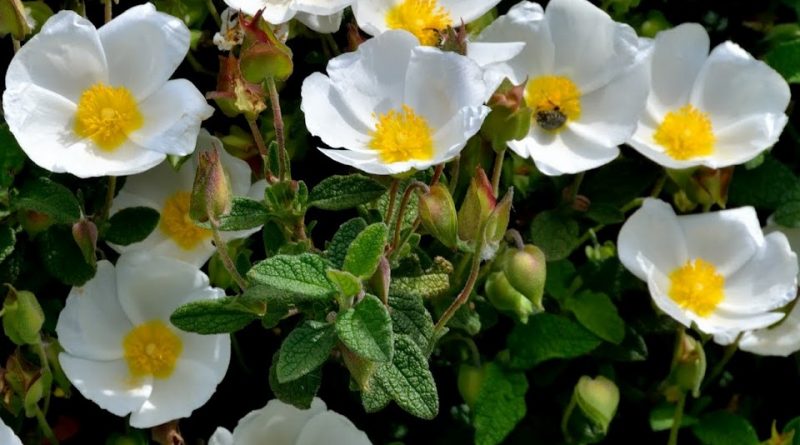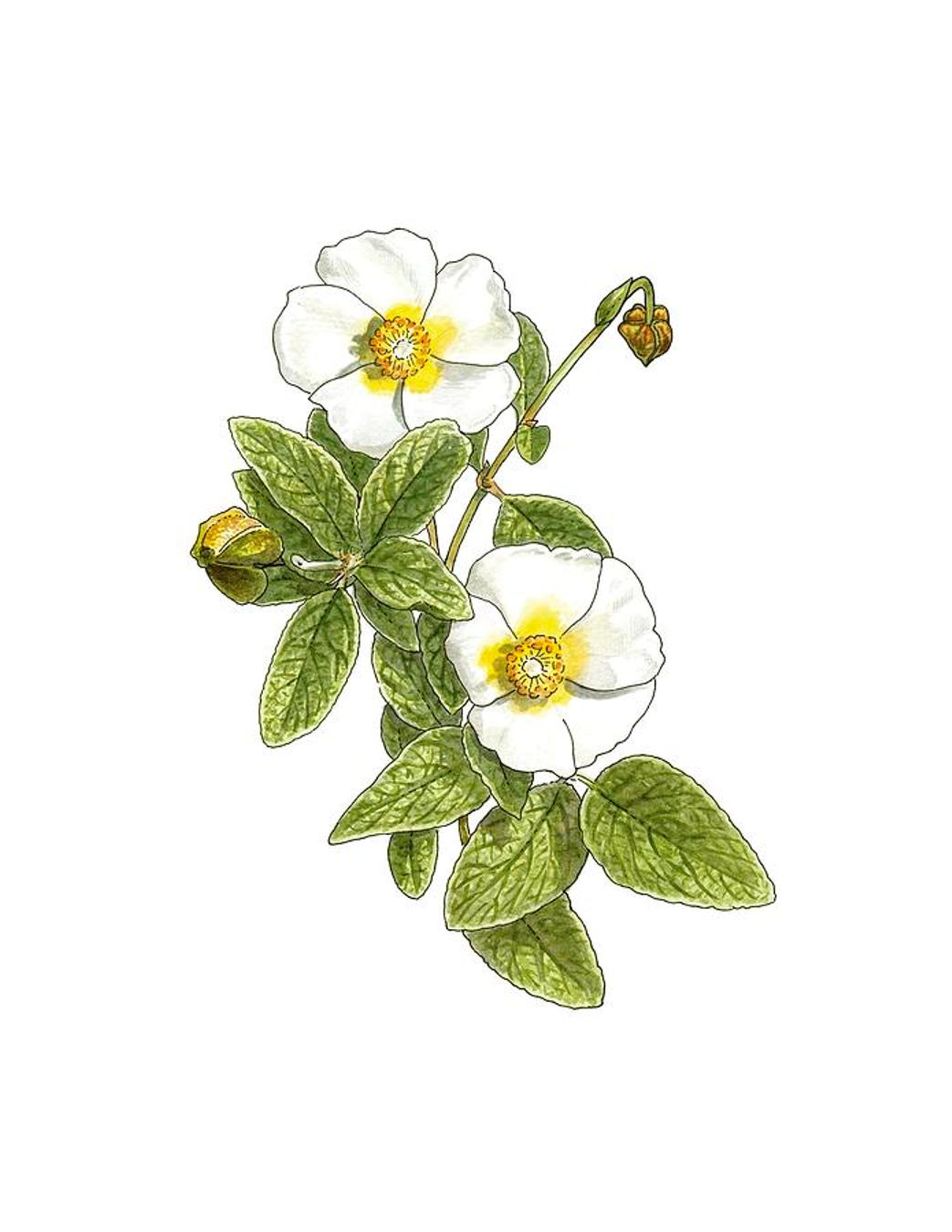Cistus salviifolius
Cistus salviifolius
The salvia cistus (Cistus salviifolius L., 1753) is a shrub species belonging to the Cistaceae family.
Systematics –
From the systematic point of view it belongs to the Eukaryota Domain, Kingdom Plantae, Magnoliophyta Division, Magnoliopsida Class, Violales Order, Cistaceae Family and therefore to the Genus Cistus and to the C. salviifolius Species.
The term Cistus salvifolius L is synonymous.
Etymology –
The term Cistus comes from the Greek κίστη kíste small box (in Dioscorides) to describe the characteristic of the ripe fruit, a capsule that expels the seeds when it snaps open.
The specific epithet salviifolius derives from the genus Salvia and folium leaf: with leaves similar to those of a sage.
Geographical Distribution and Habitat –
The salvia cistus is a typical plant of the Mediterranean where it grows mainly in the holm oak, in the Mediterranean scrub and in the garrigue, in the altitude range between 0 and 1200 meters s.l.m .; it is common in the Peloritani Mountains and throughout Sicily, extending as far as Northern Italy, where it can be found sporadically in sheltered or exposed sites at the great lakes, on the Euganean Hills, at the foot of the Apennines in Emilia-Romagna and in Istria and sporadically also in other regions such as in Piedmont, in the Val di Susa and in the Langhe.
Its habitat, even if heliophilous, is to grow as a typical shrub of the lower layer in forest or scrubland associations, where it does not form monofloristic associations but may be associated with other species of the same genus in the cistus scrub.
Description –
The Cistus salviifolius is characterized by a bushy growth not very tall, reaching 50-60 cm.
It shows a glaucous green color due to the abundant presence of hair. The leaves, which are light green in color, are oval or elliptical, petiolate, tomentose, non-sticky to the touch, with entire and non-revolute margin and with leaf lamina long from 1 to 3 cm.
The flowers, white with yellow shades at the base, are solitary and long pedunculated, arranged in the axil of the leaves, with radial symmetry and 4-5 cm diameter. The corolla is composed of 5 free petals, the androcean with numerous stamens with short filaments and yellow anthers. The ovary is exceeded with an almost sessile stigma.
The anthesis is between April and May.
The fruit is a globular, brown, pubescent 7-7 mm capsule, dehiscent by 5 valves, with numerous globular, reticulated seeds, with a diameter of 1 mm.
Cultivation –
The salvia cistus is a rustic plant, which can vegetate in conditions of prolonged drought, and which adapts to various soil pH.
As mentioned, although it is a heliophilous plant it can grow in conditions of partial shade. The plant is fruitful in the period that coincides with the beginning of summer.
It is a species that is very resistant to fires because it is able to renew the vegetation with seed germination.
Propagation can take place easily both by seed and by cuttings.
Uses and Traditions –
The Cistus salviifolius is called in Italy with the names of: Cisto femmina, Cisto with sage leaves, Brentina.
It exudes a characteristic resinous aroma, a fundamental component of the scent of the Mediterranean maquis in the spring and summer period.
Like the other species of cistus, the germination of the seeds is favored by the passage of fire. In fact the outer layer of the seeds is very hard and impermeable. Exposure to high temperatures, for example during a fire, causes the outer layer of the seed to break (scarification), which becomes permeable to water, favoring germination. For this reason, cysts are very common in areas previously covered by fires.
For this reason, this species, similarly to other similar ones, is a pioneer in the areas to be repopulated after a fire.
In other respects, the female cistus is a plant of little interest for practical purposes, has no use except sporadically as an ornamental shrub.
Preparation Mode –
The salvia cistus has no particular uses from the food or pharmaceutical point of view.
Guido Bissanti
Sources
– Acta Plantarum – Flora of the Italian Regions.
– Wikipedia, the free encyclopedia.
– Treben M., 2000. Health from the Pharmacy of the Lord, Advice and experiences with medicinal herbs, Ennsthaler Editore
– Pignatti S., 1982. Flora of Italy, Edagricole, Bologna.
– Conti F., Abbate G., Alessandrini A., Blasi C. (edited by), 2005. An annotated checklist of the Italian vascular flora, Palombi Editore.
Attention: Pharmaceutical applications and food uses are indicated for informational purposes only, do not in any way represent a medical prescription; therefore no responsibility is assumed for their use for curative, aesthetic or food purposes.


